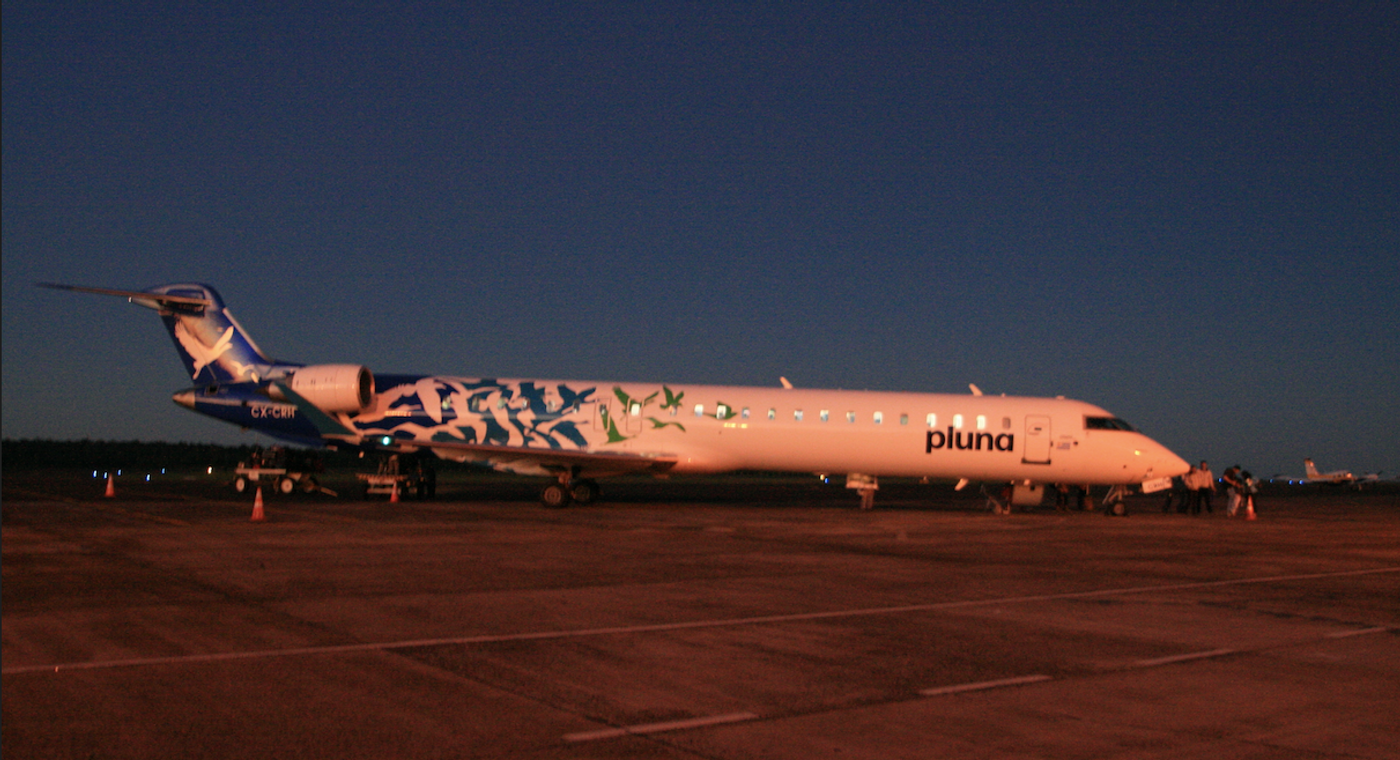Why the 5G Rollout Has Caused Problems at Some Airports
The communication on our mobile devices relies on radio waves that operate at a certain frequency. As this technology has improved, it's gotten much faster. The 5G (for 5th generation) network is about to be rolled out, and it's expected to take a huge leap forward in terms of speed and capacity. Companies that stand to profit from the advancement, such as Qualcomm, a producer of phone-networking chips, have described 5G as "transformative."
Service providers have said that performing tasks like watching a video or downloading a file will be quicker on a mobile network compared to WiFi. In a city, a 5G phone on a 5G network may be nine to twenty times faster than a 4G phone. Tests by RantCell indicated that a 5G network had an average speed of about 72 megabits per second (Mbps), while 4G had an average speed of about 17 Mbps. Networks can also experience high latency, in which delays in the transmission of information occurs, or there is a decrease in responsiveness for a variety of reasons, such as bottlenecks or geography. The latency of 5G is expected to be dramatically reduced compared to 4G.
The Internet of Things will also be able to use the 5G network, which includes connected devices, like a workout monitor or a smart refrigerator. More people will be able to control devices remotely with the 5G network, and it is expected to significantly improve the function of autonomous vehicles, which will be able to communicate with each other and their surroundings much quicker and more reliably.
But you may have heard about problems with 5g rollout and airports. So what's going on?
A WiFi network relies on 2.4- or 5.8-gigahertz bands, while the 5G technology uses a spectrum of radio waves called millimeter waves, which are 24 gigahertz (GHz) and higher (5G generally uses waves in the 30 GHz to 300 GHz range). The coverage of a 5G network doesn't extend as far, so more millimeter-wave cell towers are being installed. That also means that in rural areas, 5G will be slower than in a city.
Not many things tap into millimeter waves. But unfortunately, some older altimeters on planes do. Altimeters are crucial pieces of instrumentation in planes that detect how high a plane is above the ground. They help pilots during various aspects of takeoff and landing, including when to apply the brakes and deploy landing gear, especially in bad weather when visibility is low. The frequency used by some altimeters is close enough to the 5G spectrum (known as the C-band spectrum) to cause concern that interference will disrupt altimeters, making them unreliable or inaccurate. These concerns were raised in a report by RTCA, a not-for-profit private association that was founded in 1935 as the Radio Technical Commission for Aeronautics. They work with the Federal Aviation Administration (FAA) to develop aviation standards in a "in a consensus-based, collaborative, peer-reviewed environment," according to their website. The FAA does not regulate networks, the Federal Communications Commission (FCC) does, and the FAA warned the FCC about these problems in 2020, but sufficient action was not taken.
The FAA has responded to these concerns on its own now by issuing directives that restrict some airport operations on some aircraft. For example, Embraer E175s are now prohibited from operating when visibility is low at some airports, like Paine Field in Everett, Washington. This week, 24 flights were cancelled for that reason at Paine Field.
There have already been delays in the rollout of 5G because of this interference, and now it's plagued by controversy and confusion. An agreement has been reached with Verizon and AT&T to postpone the installation of some 5G network towers near airports.
Right now, the FAA has deemed twenty types of radio altimeters to be safe and reliable in 5G environments, so 90 percent of commercial aircraft are currently approved to takeoff and land, even in low visibility, at most airports. Regional airlines will have to continue to contend with problems, delays, and cancellations as the FAA determines how and when certain smaller aircraft like the Embraer E175 are able to operate in low visibility. According to a January 28, 2022 statement from the FAA, they will now be able to map the areas around airports where 5G is used with precision, and interference can be mitigated.
There is some dispute that altimeters would be affected at all. In 40 other countries, there has been no issue with 5G rollout, and it has not impacted aircraft safety. Several countries including France, Spain, and Denmark have been using the 5G network, with frequencies in the C-band for several years without issue. Hopefully, the problems are limited to cancellations and inconveniences, and any danger will be avoided.
Sources: Wall Street Journal, RTCA, FAA, Scientific American









